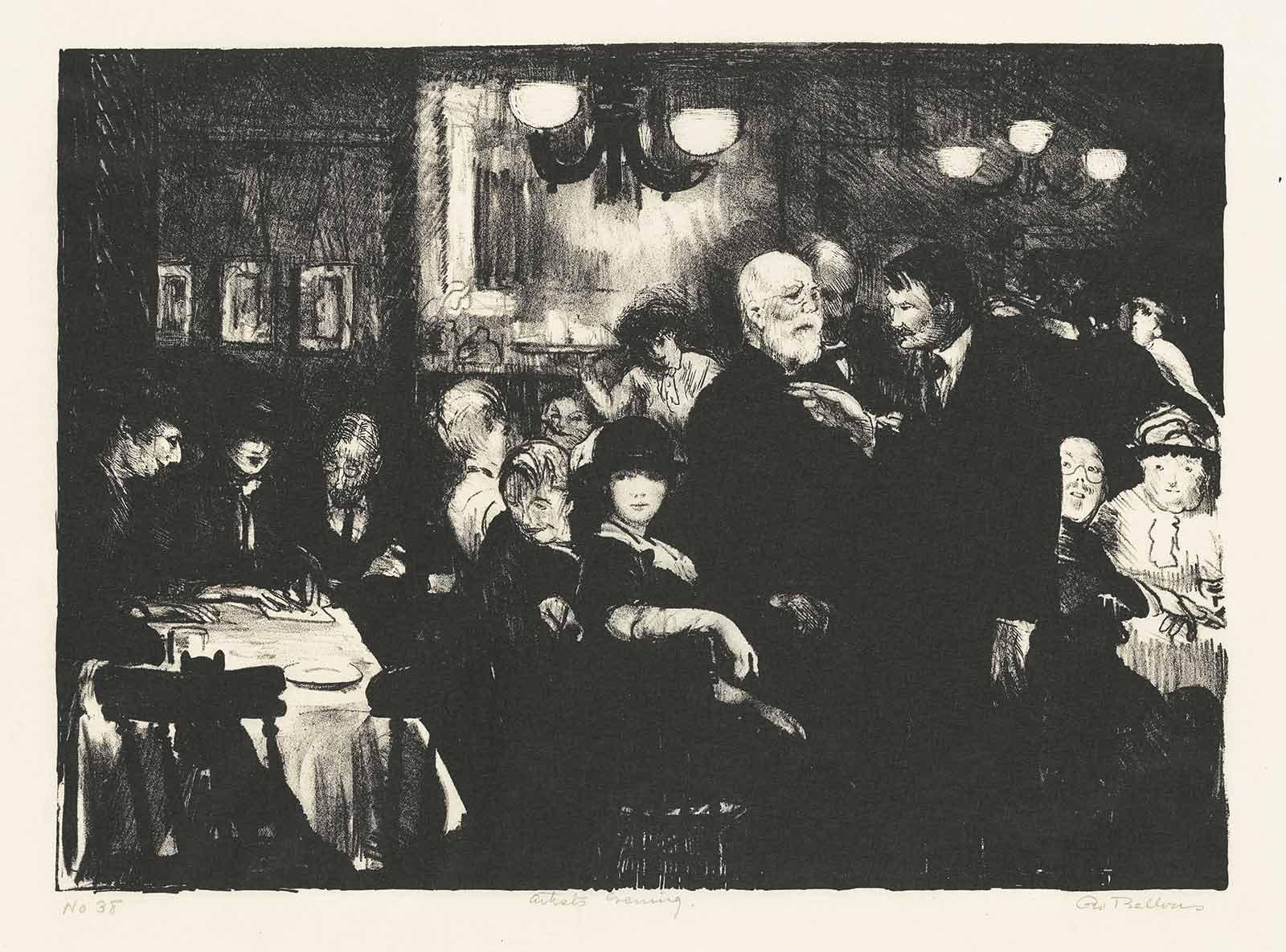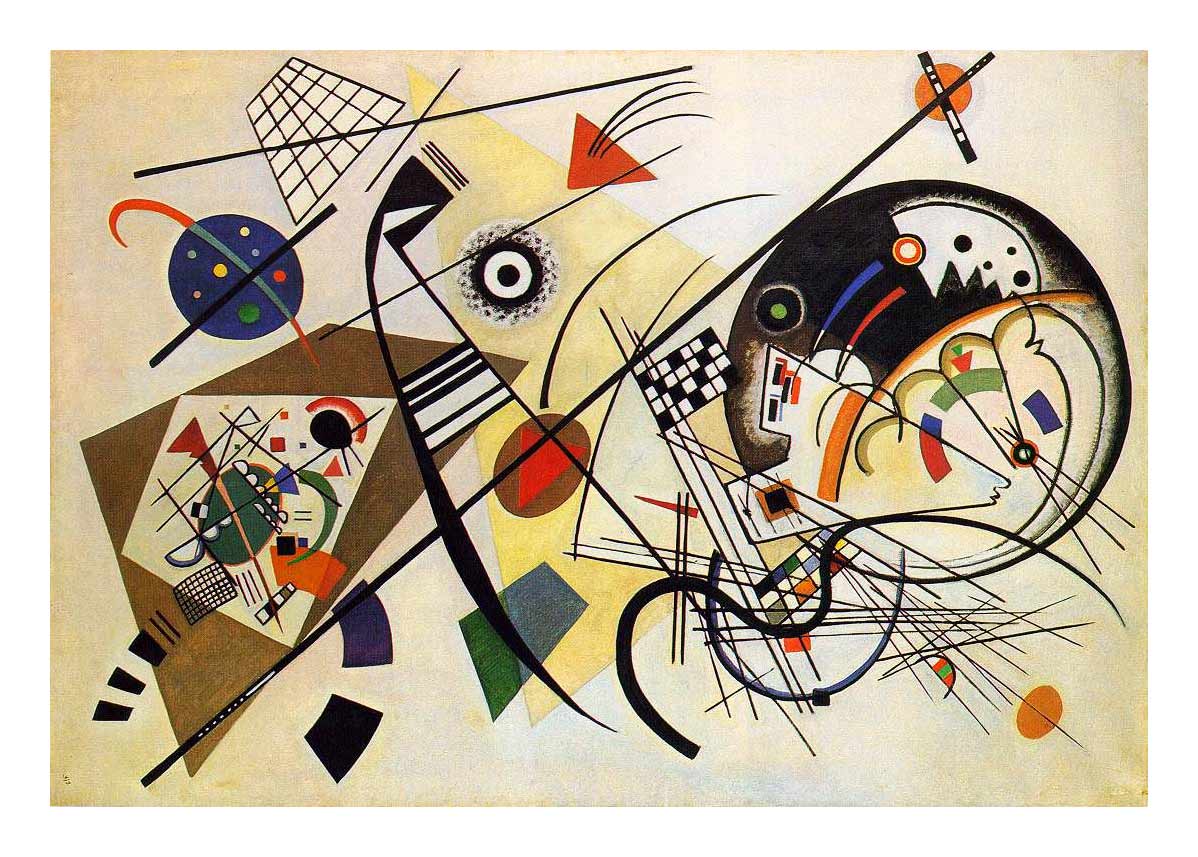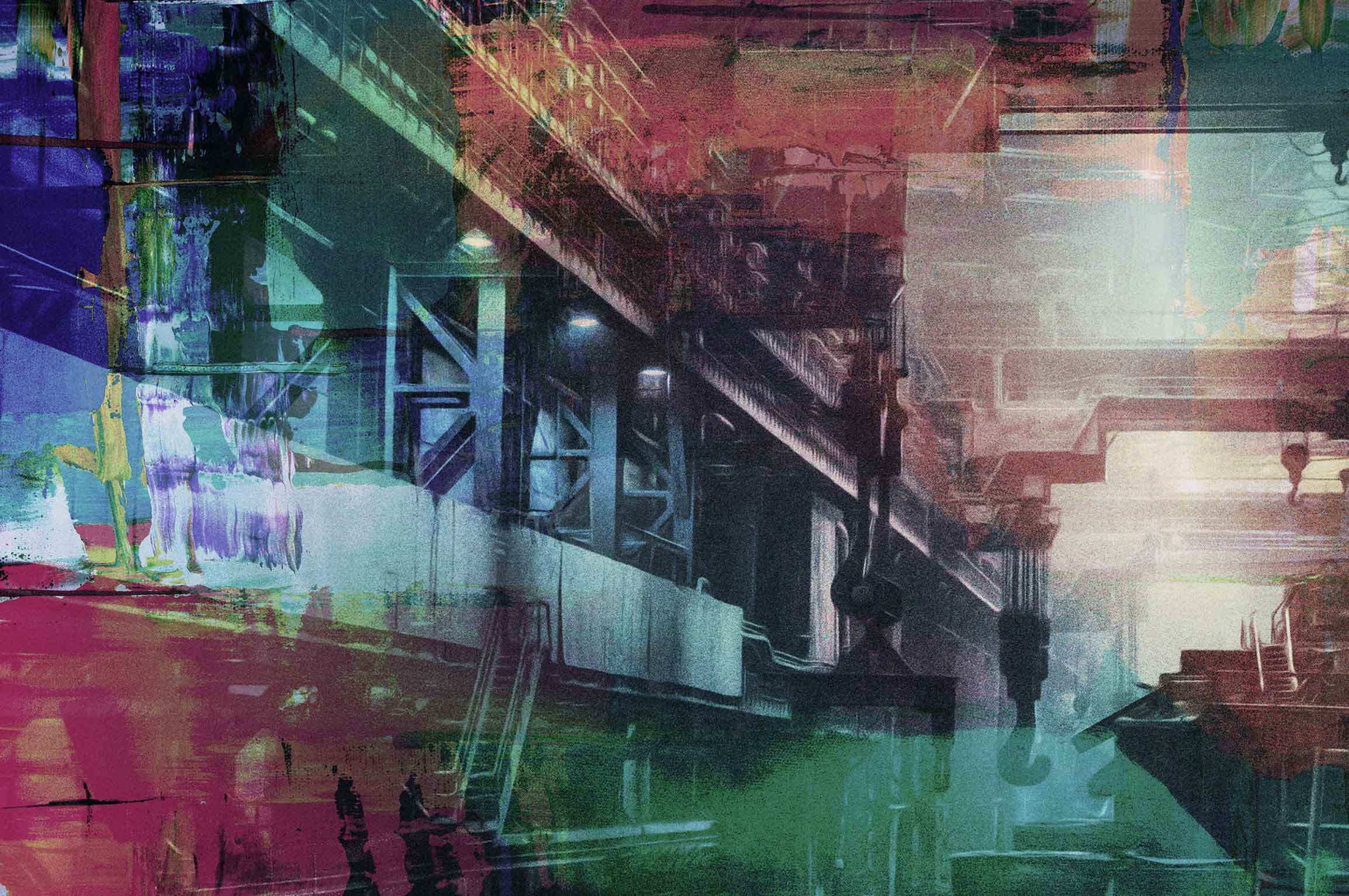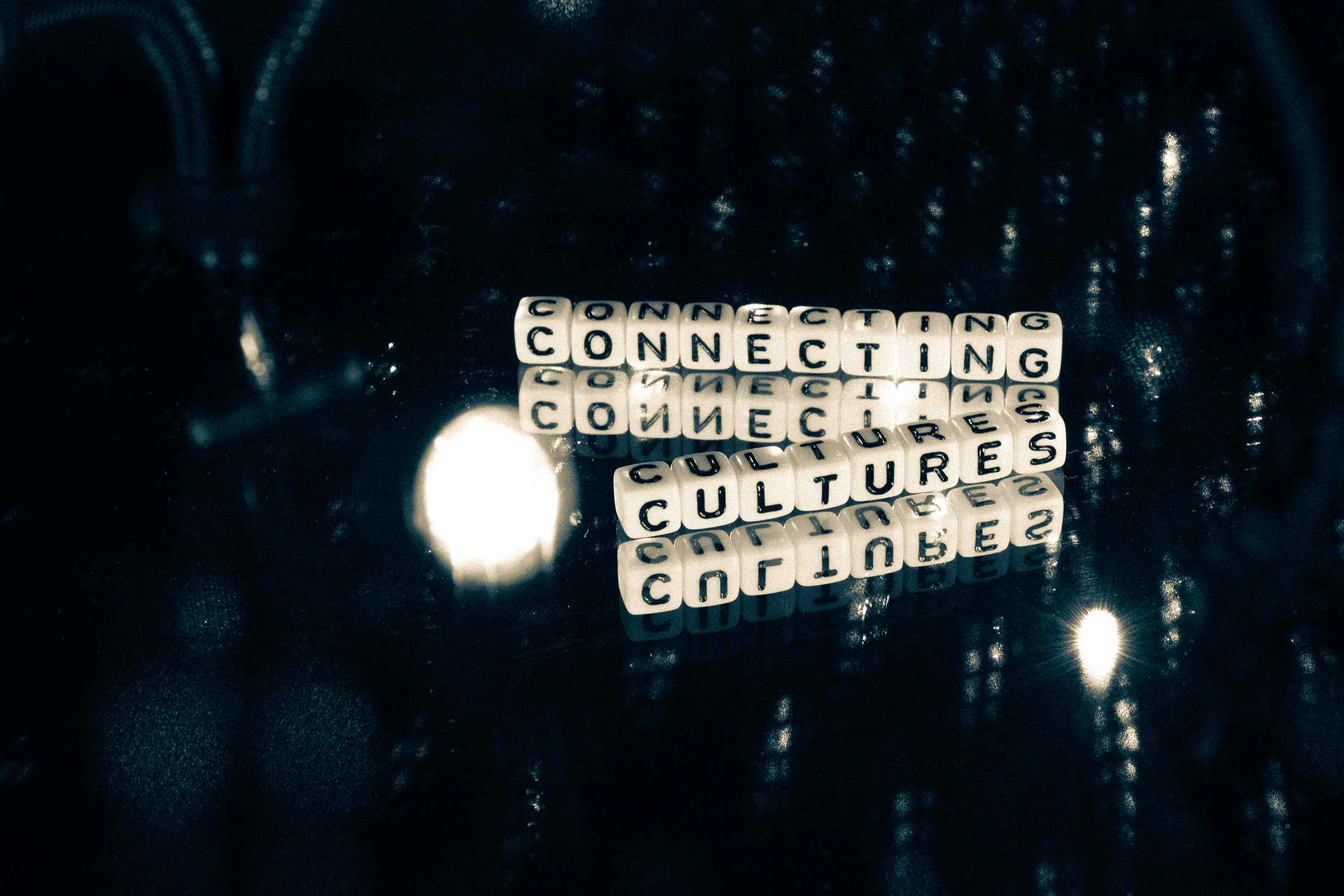INSIGHTS
Connecting Cultures
Connecting Cultures
“I am enough of an artist to draw freely upon my imagination. Imagination is more important than knowledge. Knowledge is limited. Imagination circles the world.”
Albert Einstein
Engineering, innovation, creativity, art and the humanities… Those seemingly distant territories do not associate easily. This Insight, called “connecting cultures”, explores the cultures lying behind those disciplines and discovers a number of fascinating cases for their complementarity, thereby bringing to light actual connections between them.
The story of two cultures
If we abide by the casual definition of culture, it would be explained as an umbrella term that covers the social behavior and norms found in human societies. Often tacit and not expressly defined, this set of customs and beliefs has been however given a broader meaning in recent years. Industry’s evolution has given rise to a variety of terms such as corporate, organizational, innovative, customer-focused, and many more, the meaning of which does not exclusively adhere to the general civilization values. Hard sciences and the humanities, too, have oftentimes been described as cultures in their own right – generally perceived as being disconnected from each other due to their assumed profound differences. We devote this Insight to intellectually connecting once more the cultures of the hard sciences and the humanities, after the distinctive differences between them were drawn.
Historically, the state of “disconnection” we’re touching on here did not emerge until the recent centuries. No clear borderlines had been drawn, originally, between art, philosophy, science and technology. Even if a number of reflective minds did consider contrasts between some disciplines of knowledge, William Blake being one of the most significant authors drawing a distinction between science and art, those still connecting cultures were generally perceived as one.
A clear divide started to appear in the 17th century during the “the scientific revolution”, between what would be regarded, from then onwards, as the two pre-eminent fields of knowledge: the “sciences” on one side, and the “humanities”, including the arts, on the other. But even at this point, the threat was still not necessarily to be identified as an incapacity to connect across a divide separating the cultures. Insofar a more general cultural worry was expressed. It was that calculation and measurement generally might be displacing cultivation and compassion. As a result, in many quarters, the overriding issue was the presumed threat which secular knowledge of all kinds posed to religious belief and practical piety.
That situation faced a significant turn in 1959. Over 60 years ago and long after the scientific revolution, Charles Percy Snow, an English novelist and physical chemist, has climbed the podium of the Senate House, Cambridge, delivering one of the most passionate and controversial speech distinguishing the world of science and art in a talk called “The Two Cultures”. “I believe the intellectual life of the whole of western society is increasingly being split into two polar groups.”, he stated at the very beginning of his speech. In the hours that followed, C.P. Snow had planted a concept and controversy that was bound to endure for years and decades to come, continuing to preoccupy and provoke the thoughts of contemporary authors.
The Two Cultures were identified by Snow as the one consisting of the literary intellectuals, and another of the natural scientists, between whom he was finding a deep distance, incomprehension and even antagonistic feelings:
“Literary intellectuals at one pole-at the other scientists, and as the most representative, the physical scientists. Between the two a gulf of mutual incomprehension – sometimes (particularly among the young) hostility and dislike. But most of all lack of understanding. They have a curious distorted image of each other. Their attitudes are so different that, even on the level of emotion, they can’t find much common ground.”
Beyond ferociously demonstrating their rivalry and miscomprehension, Snow was also making a powerful case of claimed disconnection of cultures and prompted the education to be re-arranged in a way to ensure people’s intellectual “bilingualism” in those two worlds – he promoted connecting cultures, so they can profit from one another.
“This polarisation is sheer loss to us all. To us as people, and to our society. It is at the same time practical and intellectual and creative loss, and I repeat that it is false to imagine that those three considerations are dearly separable.”
Over the time that passed from this fierce speech, it has been cleared out that the very reason was not to assert the superiority of any culture over another. There was also no doubt that the map of disciplines in an emerging economy and the future world would become far more complex and multidimensional than only two cultures. The whole body of human knowledge has branched and sprawled out into a kaleidoscope of academic and professional fields, with interactions consistently happening between them all. The contours of Snow’s two cultures have become to gradually lose the high definition they had been at first attributed – being blended into hundreds, if not a dozen varied cultures. But in some sense, the distinctive thought pattern of the speech has persevered over the years and in some dimensions, resonates until today.
The misconnection of cultures often seems to endure between the disciplines which mainly hinge on logical thinking and practicality, and those which above all seek to convey meaning and expression. And although the controversy of the 1959 Snow’s lecture and many criticisms it has rendered during the time, it is still important to see the question of transversal thinking and connecting cultures any less urgent or important than back then.
The question of the usability of art cultures in the sciences and vice versa remains an important voice of the century. At Vadviam, we strive to encourage connecting cultures of arts and science – the growth of the intellectual equivalent of bilingualism – and capacity not only to exercise the language for the sake of its expertise, but also to attend, learn from, and contribute to wider cultural conversations.

George Wesley Bellows, Artists’ Evening, 1916. Image in public domain.
Purpose and creativity: added value of connections
We believe that connecting cultures is not only about nurturing an understanding of how different specialties and activities fit into a larger cultural whole, but also of a recognition that attending to these larger questions is essential to deliver deep motivation and meaning to our professional activities. In the increasingly competitive world that revolves around people’s experience, it is the sense of purpose, quality of thinking and innovating, and ability to communicate the ideas that offer the edge that others could not achieve.
In recent years, a rising number of voices argue that in the modern, quickly changing world, connecting cultures of science and art can have an increasingly strong impact in business, since it allows to sustain the creativity and inventiveness that the entrepreneur’s pursuits often require. In connecting the cultures, building the capacity of lateral thinking, motivation and meaning amongst the corporate teams seem to stand out as the greatest values emerging from the combination. Barend van Bergen, EY Global Long-Term Value Methodology Leader, argues:
“Today, people expect companies to deliver more than just financial value. Authentically purpose-driven organizations serve all of their stakeholders by delivering consumer, societal, and human value. Our long-term value approach enables them to develop the metrics that demonstrate how their strategy provides value to investors and other key stakeholders.”
An increasing number of experts highlights the importance of establishing a purpose and meaning within the organizations in order to activate the employees, engage customers and stakeholders. Thanks to their unique expressiveness and connecting with human emotions, for centuries, arts and humanities have been the efficient tool to improve the social dynamics, intrinsic motivation and loyalty of people, establish communication and engagement of their audience. For this reason, the culture of arts can bring significant added value to business organizations.
Besides the purpose and meaning, creativity in business has been seen as an essential element for many years. The report of IBM, 2009 “Capitalising on complexity”, interviewed over 1500 CEO worldwide and identified “creativity” as the single most important leadership competency for enterprises seeking a path through the emerging challenges of the economy.
As a business skill, creativity is typically defined as a competence of combining knowledge and ideas into new, useful and functional solutions. It is a phenomenon strongly associated with developing innovation, an essential feature for business that operates in a volatile environment. No doubt, all the new developments require unprecedented degrees of creativity—which has become a more important leadership quality than attributes like management discipline, rigor or operational acumen, and often even classic leadership characteristics.
According to the A. Smagina, A. Lindemanis, in the new global economy, businesses have a lot to learn from arts and humanities. Combining right-brain imagination of Artists with left-brain logic and analysis of business people increases the capacity for breakthrough ideas and insights that lead to success.
Artists are also said to be “third generation innovation” because of the artistic education and training they possess very well-developed skills of critical thinking, observation and comprehension of consumer needs. Their desire to experiment and reflect allows them to make sense of radically ambiguous and uncertain situations and progress beyond the borders. These skills are usually referred to as artistic creativity, and those are important for innovation. Lester and Piore, in their research “Innovation: The Missing Dimension.” are convinced that “ambiguity is the critical resource out of which new ideas emerge” as it encourages discussion which leads to new ideas.
Connecting cultures of science and humanities influences positively what the Nobel laureate, economist, and psychologist Herb Simon calls “network of possible wanderings,” the intellectual space used to explore and solve problems. Many companies all over the world are establishing partnerships between those different disciplines and converting them into valuable effects in improved human resources management, marketing, research and development, and many more. The quote of Warren Buffet resonates in business with increasing soundness:
“I am not a businessman. I am an artist.”

Wassily Kandinsky (Russian, 1866 – 1944), Transverse Line (1923). Image in public domain.
The case for connecting cultures of engineering and art
On its way of becoming a prominent writer, in 2015, David H. Cropley from University of South Australia has published a compelling case explaining why creativity is important to engineering and how can it facilitate the development of new and efficient products in the technology industry.
The value of arts and humanities for innovative technologies is rooted in the creativity that it can catalyze. In his research work, Cropley writes:
“The value of creativity and innovation to engineering is rooted in the problems that engineers solve, and the catalyst provided by change.”
The change implicated in this research is alluring to the dynamics of the modern world – climate change, economic changes, technology evolution and many more. According to Cropley, engineering, as a domain specialized in problem-solving, by definition connects the newly emerging needs with new solutions and technologies. “Because creativity is concerned with the generation of effective, novel solutions, creativity and engineering are, in essence, two side of the same coin.”
At the same time, the work of Cropley echoes the concerns of disconnected cultures of creativity and engineering. The paper brings an enormous amount of references for the failure of engineering education to address the need for creativity, quoting the alarming skill deficiencies pointed out by employers across the world and highlighting the need for creative thinking among the graduates of technical universities. That concerning state of affairs is explained by the author by over-specialization problem, narrowing education fields, and simple disregard for these soft competencies as only supplementary to the engineering skills.
It is difficult to disregard the connection of the Cropley work with the speech of Two Cultures quoted at the beginning of this insight. Surprisingly, both works converge in appealing to the education system and call to promote the case of connecting cultures. Bridging together the two can enable lateral thinking and developing complementary skills, abilities and attitudes that can broaden the capacity of finding solutions to the challenges of the modern world.

Connecting cultures – Graphic creation of Vadviam, 2022
Innovation is combination
Encapsulated in our motto, Value Added via Added Meaning, our core ambition is to do exactly that: help technology professionals and enterprises to add “expressive, humanistic value” to their product and service offerings.
By correlating the new technological solution with wisely selected art and literature, we can imbue them with more “meaning”, reinforce their readability and acceptability, and help them contribute to a safer world and a better future.
We believe that connecting cultures, understood as bridging the science and humanities, can not only enhance, in the eyes of everyone, the overall sum and substance of business offerings, but also favour transversal thinking, trigger flashes of inspiration and lead to general efficiency improvements. We continue passionately searching and surveying the realm of the arts and humanities for works, ideas, events and perspectives that can be used as relevant connections and counterparts to the technologies developed or implemented by our guests and clients.

Connecting Cultures (photography by Vadviam, 2022)
References
- C.P. Snow, The Two Cultures, Cambridge University Press, 1959
- A. Smagina, A. Lindemanis, What Creative Industries Have to Offer to Business? Creative Partnerships and Mutual Benefits, World Academy of Science, Engineering and Technology, International Journal of Social, Behavioral, Educational, Economic, Business and Industrial Engineering, 2012
- R. Lester, M.Piore, Innovation: The Missing Dimension. Cambridge, MA: Harvard University Press, 2004.
- David H Cropley, Creativity in Engineering, 2016
- IBM, Capitalising on Complexity, 2010
- EY, M. Dimitracopoulos, Four ways to put your purpose to work in 2021, 2020
About us
Vadviam connects knowledge of environmental matters with a passion for social progress. By combining years of experience in industrial decarbonisation with novel approaches to articulating sustainability, we help companies to enhance and communicate their performance in this field.

